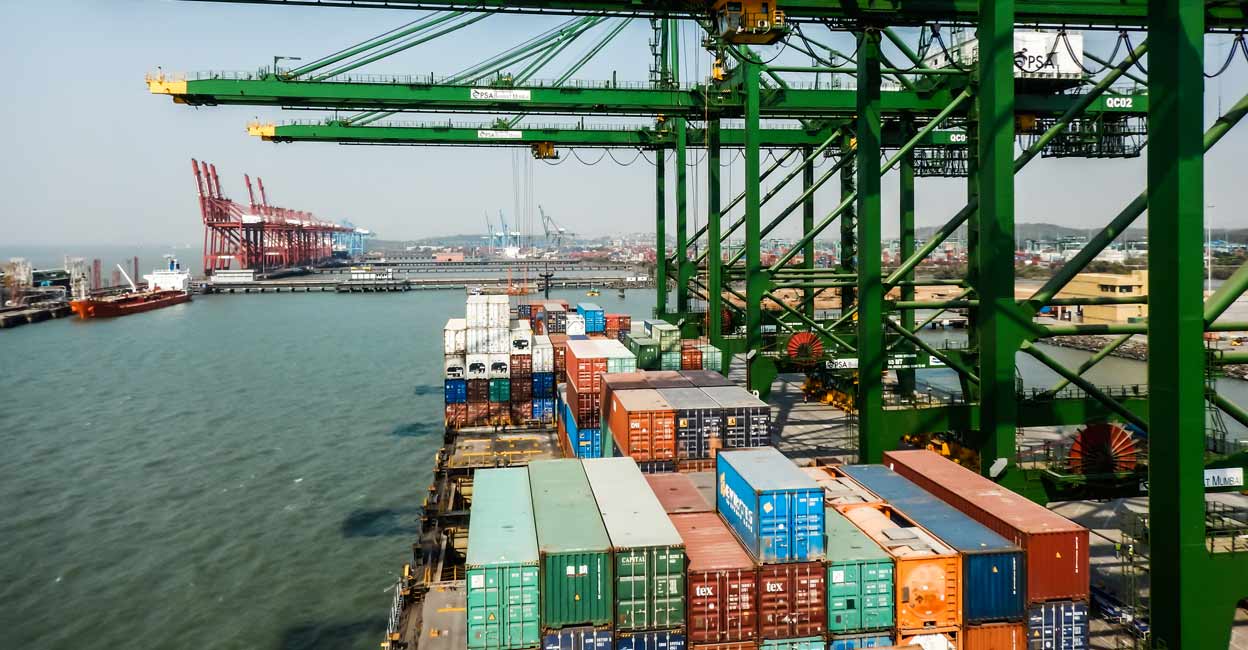31 Mar , 2022 By : monika singh

India’s annual merchandise trade has breached the crucial $1-trillion mark for the first time even before the fiscal is set to end, a senior government official told FE, as both exports and imports have scaled fresh peaks. It has surpassed the earlier record of $844 billion, achieved in FY19, by a wide margin.
After a Covid-induced slide in FY21, India’s goods trade got a fresh lease of life this fiscal amid a resurgence of industrial demand in advanced economies and improved domestic consumption with the easing of localised pandemic-related curbs. Global bid to spur economic growth, backed by both liberal fiscal and ultra loose monetary policies, led to a rise in international demand for merchandise that drove up commodity prices and brightened India’s trade prospects as well.
As of Wednesday, merchandise trade is estimated to have hit $1,010 billion, said another official. “Exceeding the $1-trillion trade level is a big psychological boost for a nation that aspires to be in the big league of top trading countries,” he added.
The government last week said goods exports crossed the ambitious target of $400 billion, while imports touched $589 billion until March 21 this fiscal. Exports had jumped 37%, albeit on a contracted base, until March 21, driven by a stellar performance by sectors like engineering, electronics, gems and jewellery, chemicals and petroleum products. Similarly, the rise in imports during this period was supported by a spike in oil prices and massive purchases of coal and gold.
The surge this fiscal will somewhat prop up India’s share in global trade, although it will take the country sustained growth over the next few years to regain its lost market share, especially in exports. Its share in global exports for merchandise was 1.7 % and in global imports was 2.6% in the pre-pandemic year of 2018.
Commerce minister Piyush Goyal had then said the fact that the lofty export target was achieved despite the Covid onslaught, supply-chain woes and the Russia-Ukraine conflict is a testimony to “the resilience of our exporters”.
The top five export destinations are the US, the UAE, China, Bangladesh, and the Netherlands. Interestingly, the UAE regained its position as the second-largest export destination for India after losing out to China in FY21.
Of course, the Ukraine crisis has now posed fresh risks for exporters, as global supply chains remain tangled and shipping costs have skyrocketed across countries. However, it has also created some opportunities for Indian suppliers of wheat (Russia and Ukraine are large exporters of the grain) and some other farm commodities in the export market.
Some analysts, however, pointed out that the pace of export growth will be difficult to maintain once the the domestic economy rebounds strongly. Pronab Sen, noted economist and former chief statistician, told FE recently that India’s latest export boom may have been driven partly by producers’ move to utilise vast idle capacity, mirroring the vent-for-surplus theory. “There is an argument which was very popular at one time but has completely gone out of our discussion now, and that is the vent-for-surplus theory. This essentially means that if a country has a high level of unutilised capacity, then producers use that idle capacity (because their fixed cost is already taken care of) to sell products at relatively low costs. This leads to greater exports.”
However, this works only so long as the economy has large unutilised capacities. “However, as the domestic economy starts picking up and capacity utilisation begins to go up, the surplus exports may come down. I suspect, the current export boom is partly driven by this vast unutilised capacity of Indian Inc,” he added.
0 Comment